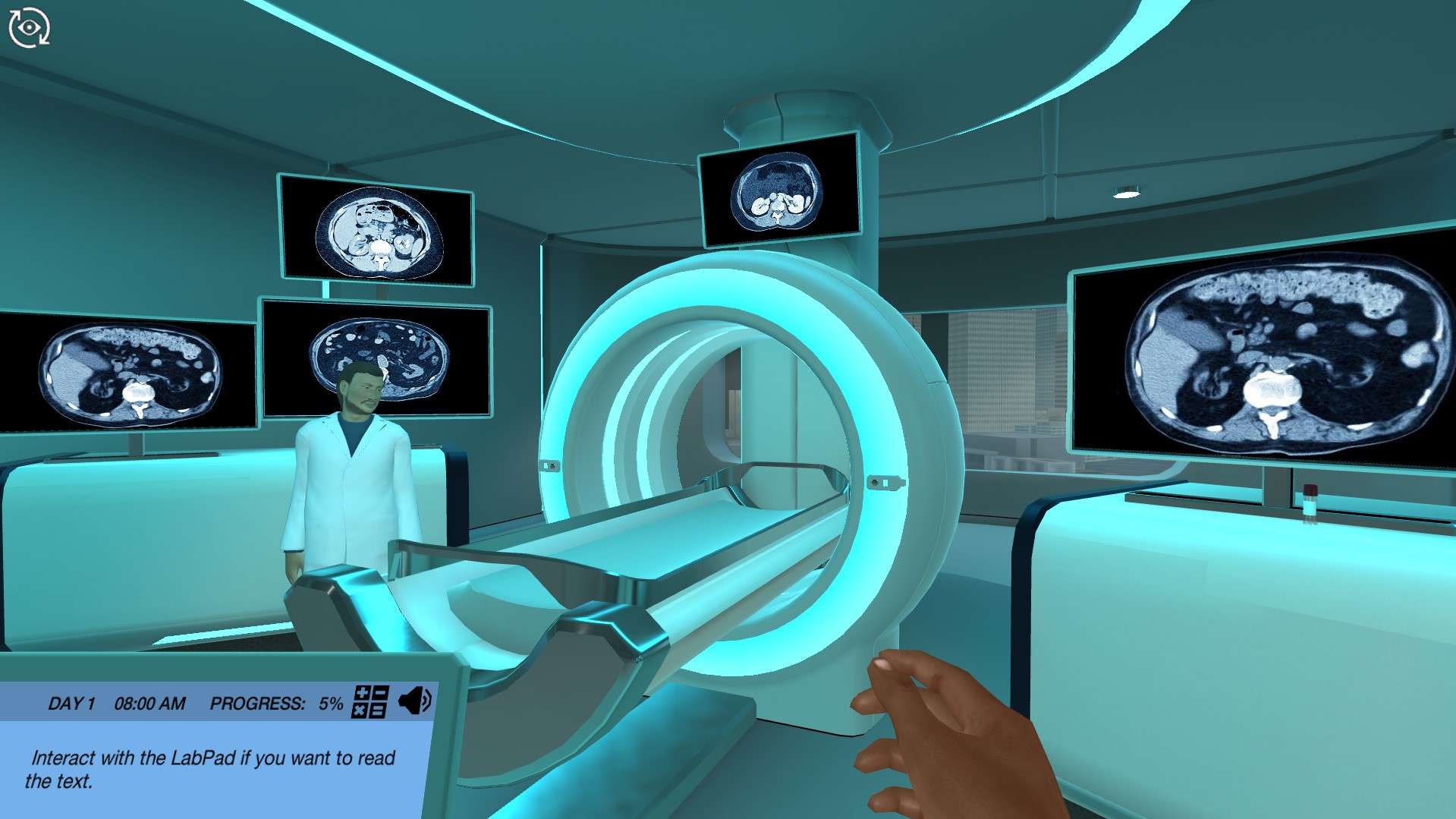Heading 1
Heading 2
Heading 3
Heading 4
Heading 5
Heading 6
Lorem ipsum dolor sit amet, consectetur adipiscing elit, sed do eiusmod tempor incididunt ut labore et dolore magna aliqua. Ut enim ad minim veniam, quis nostrud exercitation ullamco laboris nisi ut aliquip ex ea commodo consequat. Duis aute irure dolor in reprehenderit in voluptate velit esse cillum dolore eu fugiat nulla pariatur.
Block quote
Ordered list
- Item 1
- Item 2
- Item 3
Unordered list
- Item A
- Item B
- Item C
Bold text
Emphasis
Superscript
Subscript
About This Simulation
Explore the structure of the kidney and discover its different functions by trying to uncover the mode of action of a new diuretic drug that has the potential to prevent hypertension.
Learning Objectives
- Understand the morphological relationships between the kidney tubules and the circulatory system
- Analyze experimental data for calculating glomerular filtration rate
- Set up and perform a perfusion of renal tubules, including the calculation of liquid absorption rates
- Learn about the epithelial transport mechanism in the kidney tubules
- Use experimental data to assess the mode of action of a diuretic drug
About This Simulation
Lab Techniques
- Data analysis of a tubule reabsorption experiment
- Analysis of glomerular filtration rate
- Perfusing and extraction of a kidney from a rat
- Radioimmunoassay
- Preparing a section of a nephron tubule
Related Standards
- Out of Scope
- No direct alignment
- Biology D.2 Digestion
- Biology D.1 Human nutrition
Learn More About This Simulation
Did you know your kidneys play a critical role in purifying the bloodstream and recycling important molecules? In this simulation, you will learn about the structure of the different tissues inside the kidney and their respective functions for maintaining a healthy body, as well as their influence on urine regulation.
Uncover the mode of action of a new diuretic drug
A diuretic drug can help with hypertension and prevent kidney disease by increasing urine output. In this simulation, you’ll meet a nephrologist who has a promising new drug candidate, but who would like a student to elucidate the mode of action of this drug before clinical trials can be undertaken. You will explore the kidney structure through holograms and perfuse a kidney from a dissected rat to test different hypotheses regarding the potential mechanism of this new drug candidate.
Perfuse a kidney and perform a radioimmunoassay
A full 3D hologram of a kidney will let you explore the functions of the different renal tissues throughout the simulation, helping you formulate plausible hypotheses regarding the mode of action of the drug on different renal structures. You will also perfuse and extract the kidney of a dissected rat, before performing a radioimmunoassay on the section of a nephron. You will measure the resulting flow of radioactive perfusate to identify the target of the new diuretic drug candidate based on water and ion transport through the epithelial barrier.
Test your hypotheses
There are many ways a diuretic drug could influence urine output in the kidney. Using the 3D hologram and all the data at your disposal, will you be able to figure out the mode of action of the mysterious diuretic drug?
Boost STEM Pass Rates
Boost Learning with Fun
75% of students show high engagement and improved grades with Labster
Discover Simulations That Match Your Syllabus
Easily bolster your learning objectives with relevant, interactive content
Place Students in the Shoes of Real Scientists
Practice a lab procedure or visualize theory through narrative-driven scenarios


For Science Programs Providing a Learning Advantage
FAQs
Find answers to frequently asked questions.
Heading 1
Heading 2
Heading 3
Heading 4
Heading 5
Heading 6
Lorem ipsum dolor sit amet, consectetur adipiscing elit, sed do eiusmod tempor incididunt ut labore et dolore magna aliqua. Ut enim ad minim veniam, quis nostrud exercitation ullamco laboris nisi ut aliquip ex ea commodo consequat. Duis aute irure dolor in reprehenderit in voluptate velit esse cillum dolore eu fugiat nulla pariatur.
Block quote
Ordered list
- Item 1
- Item 2
- Item 3
Unordered list
- Item A
- Item B
- Item C
Bold text
Emphasis
Superscript
Subscript
Labster can be integrated within a school's LMS (Learning Management System), and students can access it like any other assignment in their LMS. If your Institution does not choose an LMS integration, students will log in to Labster's Course Manager once they have an account created. Your institution will decide the access method during the sales process.
Labster is available for purchase by instructors, faculty, and administrators at education institutions. Purchasing our starter package, Labster Explorer, can be done using a credit card if you are located in the USA, Canada, or Mexico. If you are outside of North America or are choosing a higher plan, please speak with a Labster sales representative. Compare plans.
Labster simulations are created by real scientists and designed with unparalleled interactivity. Unlike point and click competitors, Labster simulations immerse students and encourage mastery through active learning.
Labster supports a wide range of courses at the high school and university level across fields in biology, chemistry and physics. Some simulations mimic lab procedures with high fidelity to train foundational skills, while others are meant to bring theory to life through interactive scenarios.















